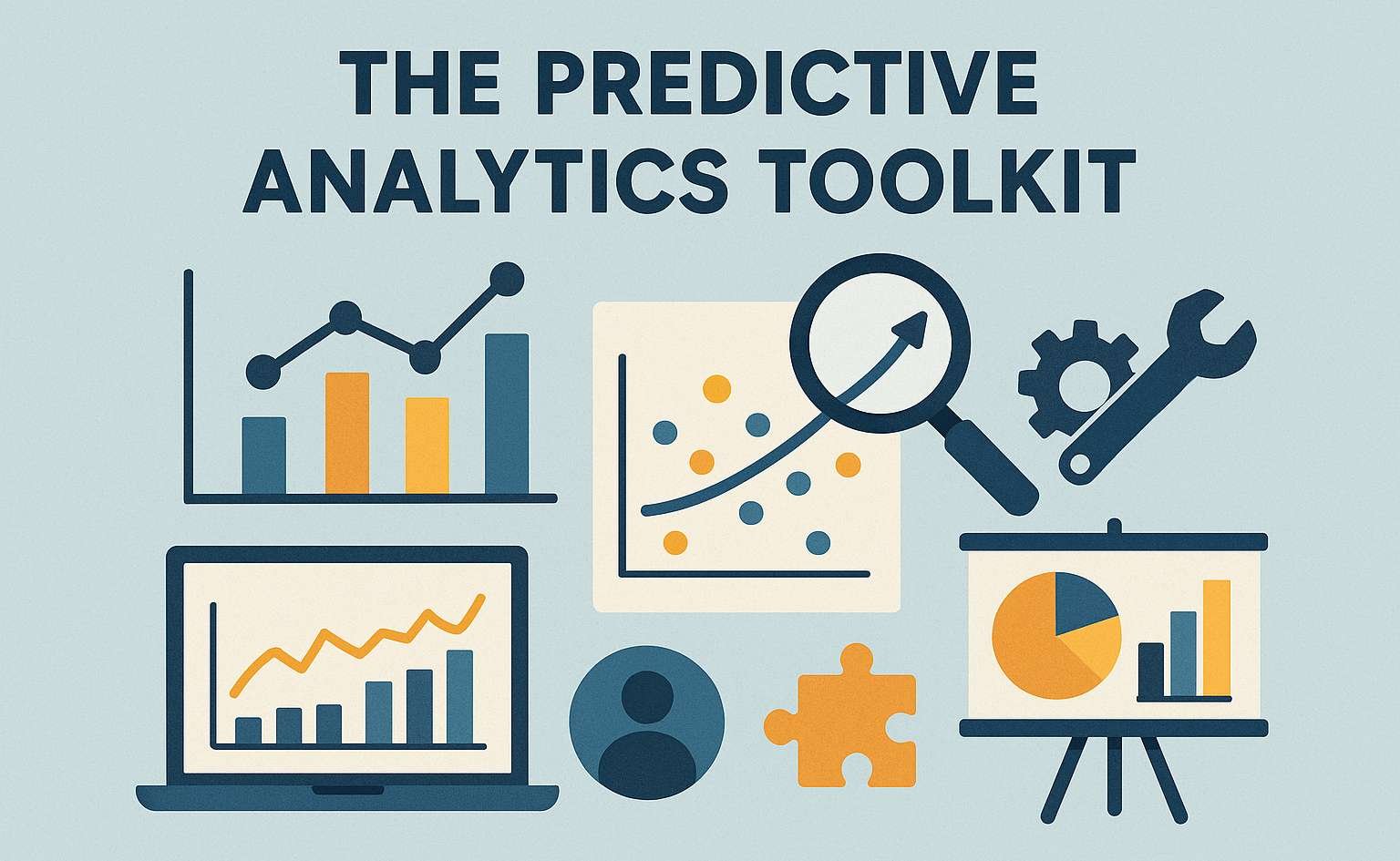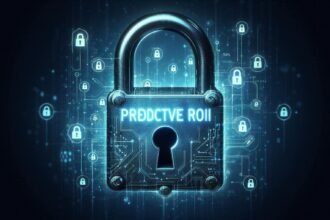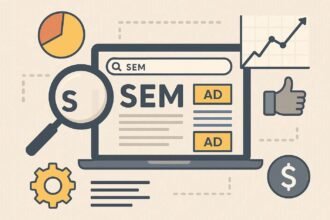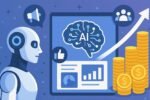Introduction to Predictive Analytics
Predictive analytics acts as an x-ray into the future. It helps businesses anticipate possible scenarios of what lies ahead by sifting through existing data. With the right predictive model in place, business leaders gain insightful foresight. They can simplify their decisions, meanwhile anticipating the approximate consequences of a given action. Long-term trends come into focus, enabling the strategic allocation of operations and resources. Instead of falling behind the competition, decision makers position their business ahead of the curve.
Predictive analytics constitutes an essential first step. Starting with the right predictive model helps ensure such success. Develop your model from the right data set. Then create your questions carefully. Analyze the results within the context of your available data and your business environment. Smart planning together with a dash of imagination can pay big dividends.
The Importance of Predictive Analytics in Business
Predictive Analytics is a powerful tool that enables organizations to foresee future happenings. It helps companies use past data to predict consumer behavior and business trends, and then plan accordingly.
Having a sneak peek into the future is a distinct advantage. It allows you to plan for threats, capture opportunities and set the right business strategy. Predictive analytics plays a crucial role in decision-making. It assists businesses in maintaining a competitive edge by anticipating future conditions that might affect their operations.
Key Concepts in Predictive Analytics
A sneak peek means spotting a vague but real outline of something beforehand. For example, deciding what clothes to wear after a quick glimpse out the window. That’s what predictive analytics is all about: a business’s sneak peek into tomorrow. It means assessing what is likely to ‘pop up’ soon. Some companies rely on predictive analytics to forecast merchandise sales during high seasons and plan their supply chains accordingly. Other firms use it to anticipate the delivery of goods or environmental conditions during business operations.
Predictive analytics helps organizations make strategic moves well ahead of time—scheduling timely deliveries, recruiting extra personnel, adjusting business strategies, or even presenting offers to customers at the right moment. Employing predictive analytics turns one’s business into a dynamic competitor capable of anticipating future challenges and grabbing ensuing opportunities. At its core, predictive analytics utilizes historical information and analyses it with a statistical, data-mining, or machine-learning model to evaluate the risk or opportunity of a future event, such as the likelihood of a customer canceling a service or a company going bankrupt. Building an effective predictive model for a business requires a clear understanding of several key concepts: Data Mining, Statistical Modeling, and Machine Learning Techniques.
Data Mining
Data mining, an intriguing facet of predictive analytics, describes the extensive process by which organizations extract essential information from a vast reservoir of data. Much more than simple statistical analysis, data mining raises those vital questions that foster strategic thinking about future business decisions. Insightful queries, such as: What customer segment is most likely to respond favorably to a new offering? Which recurring problems pose the greatest threat to customer retention? What timeframe should organizations outlook when evaluating customer lifetime value? What is the baseline level of sales volume, even in periods of economic downturn? Smart companies strive to answer these and other pertinent questions before their competitors do. Those that don’t risk watching their rivals set prices, develop new products, define promotional strategies, and build loyal customer bases.
Data mining’s secret weapon: continuously collected data which tracks the ongoing, day–to-day operations of companies and customers. Sources for these data sets include internal corporate databases, information obtained from licensed suppliers, and demographics or other economic-related data from government agencies. As a result, distinct data-mining approaches can be employed within various industries. Credit-scoring models identify the likelihood of consumer default on a loan or credit card, while repair-cost management models forecast the probability of airplane engine breakdowns or determine required engine performance maintenance intervals. Correspondingly, marketing uses data mining to segment consumers according to buying behaviors or identifies factors that lead to high consumer defections in particular customer groups.
Statistical Modeling
Definitions of statistical modeling vary, yet common elements can be identified. All definitions recognize it as a direct method for predicting future outcomes and agree on three essential grounds: reliance on the correct specification of the underlying model; dependence on the quality of the available data; and the use of log-likelihood or loss function to approximate the true probability distribution.
In predictive statistics, a subset of statistical modeling, approaches have been extended to handle dependent variables that are nominal, ordinal, or cardinal with censoring and truncation. The focus lies on establishing the form and parameter values of a chosen model for customer behavior to predict future behavior of individuals or groups. Such predictions assume the correctness of the model form and that modeled effects capture true influences on customer behavior. Nevertheless, the choice of the appropriate model for a particular business issue remains a challenge, lacking an established methodology.
Machine Learning Techniques
These techniques are still quite young, having only started to come to prominence during the 1990s. Their initial form was known as “artificial neural networks,” roughly modeled on the functioning of neurons in the brain. The technique was proved to be worthwhile (see Heinzinger, Théobald and Vollmer, 1991; and Heinzinger, 1996), but the really great advantage of the technique came from the concept that humans are able to learn and grow with experience. Machine learning systems also “learn” as data are presented to them. Some subtle math is applied so that the results of these systems improve as more and more data are processed.
Many of these systems produce remarkably complex and stories—think of the fact that some credit card companies refuse to automatically authorize transactions based on their machine learning systems’ predictions, ostensibly because they are “right a little too often.” Over the years, many other methods have been added to the machine learning family. Some of these include K-nearest neighbor, Naïve Bayes, rules induction, Evolution-based, and Support Vector Machines.
Data Collection Methods
Surveys and questionnaires stand out as commonly employed methods for gathering primary data. As early as the 1970s, the practice of Web scraping began underpinning credit and marketing analyses. Over time, activities such as Internet routing, content mining, manipulation, SEO-induced crawling, as well as user tracking, monitoring, information harvesting, and logging further developed the field of Web scraping.
Transactional data are records of the exchanges of goods or services between buyers and sellers. They represent highly detailed summaries of the millions of daily airport operations and provide valuable insights into regulations, staffing decisions, ongoing conditions, or the need for flight capacity adjustments.
Surveys and Questionnaires
Predictive analytics starts with the data — but gathering it isn’t always the easiest or cheapest part. A Survey is one of the most straightforward means of collecting data. A fixed set of written questions is assembled ahead of time, the questions are administered to a fixed set of people, and the responses are formatted into a predictable form. What’s really important at this point is to get a representative sample size — surveying a few hundred employees paints a very different picture of how people have used your product, compared to people who signed up for an online exercise class.
Questionnaires can be administered via mobile phone, by email, online on a website, or over the telephone. The Data Collection staff on your predictive analytics team don’t always have to be full-time employees; surveys can be outsourced to companies that specialize in data collection. Specialized support is often invaluable for tasks like having respondents redial a toll-free telephone number and complete the survey, if their first attempt at the survey was disconnected. The Survey Methodology experts can help craft questions that avoid subconsciously biasing the respondents.
Web Scraping
The importance of data for predictive analytics cannot be overstated — it is critical to the development phase, as well as the creation of predictions. Data—or more specifically, the results of data mining—is typically collected using a variety of exploratory techniques, including surveys and questionnaires, operational transactional data, and Web scraping.
Web scraping is the automated collection of Web pages that allows data mining. The process involves organizing the information and presenting it in a simple format that is easy to analyze. Web scraping enables businesses to harness data that would otherwise remain untapped and static. Since many sources of industry, retail, and online marketing data reside on Web sites, gathering this information is invaluable. Simple forms of Web scraping can reveal, for example, the prices of different retail products or airlines’ seat availability at specific dates and times. Web scraping lies at the heart of a great deal of all predictive analytics.
Transactional Data
Transactional data represents key enterprise events, services, and purchases, capturing critical information about exchanges between executing parties. Public offerings determine what is captured, affecting systematic data quality.
Transactional data forms the foundation for analyzing what has already transpired. Many firms aim to augment it with alternative datasets, deriving insights about customers, operations, and the marketplace that improve predictivity and deliver forward-looking advantages. Preparing transactional data involves organizing it as a data mart or data warehouse and cleansing it to address gaps and inconsistencies.
Data Preparation and Cleaning
To have effective predictive analytics, modelers need quality, clean data. Recognizing that baby steps lead to giant leaps, data scientists use a variety of operations to prepare data prior to modeling.
Quadruple Data Scrubbing Top Methods: Missing Data, Duplicate Data, Outliers and Extreme Values, Noise. There are several methods for addressing missing data: (a) drop affected rows; (b) replace missing cells using median, mean, mode; or (c) fill cells with constants. Standardizing data scalers variables allows comparisons without units of measure affecting results. Normalization and standardization are the two most common methods; z-score normalization creates business-friendly metrics. Normalization assures values remain in a common range. Handling duplicate data requires one or more methods. Outliers can be managed via trimming, winsorizing, or binning.
Handling Missing Data
Before the analysis, the data may need substantial preprocessing to prepare it for input into the model. For univariate analysis, the choice of descriptive statistic or visualization depends on the scale of the variable. Typically, category (and potentially ordinal) variables are described using contingency tables and the Chi-square test for associations, while continuous variables are summarized by descriptive statistics and simple boxplots. When relationships between variables are assessed, a Chi-square test for association is again utilized for two category variables. For two continuous variables, a Pearson correlation is calculated and plotted in a scatterplot. Lastly, an Analysis of Variance (ANOVA) provides a more informative summary when there is at least one category explanatory variable and one continuous response variable. Due to its parametric nature, histograms and a Shapiro–Wilk test for normality are subsequently applied to the response variable.
If missing data are identified, they must be treated for the model to be trained correctly, as the majority of statistical models require complete data. There are three common approaches to handling missing data: excluding cases, missingness modeling, and imputation. Excluding all observations with one or more missing observations (listwise deletion) can severely reduce the dataset’s size and, consequently, the model’s reliability. Missingness modeling involves classifying observations according to the pattern of missingness but faces similar library and robustness issues as approaches using all data. Imputation methods replace missing values with substitutes, such as the mean, median, or forecast values from time series models. Determining the appropriate imputation technique necessitates an understanding of the underlying pattern of missingness.
Normalization Techniques
All data elements used in analysis must be free of inconsistencies, missing elements, and other potential problems that may bias the analysis or give misleading results. In general, predictive analytics is a process of data mining. A statistical model is constructed, and the model is adjusted to optimize predictive accuracy. Approaches to ensure the model’s accuracy include: gathering more data, testing different possible models, applying professional judgment, and deploying business intuition. Machine-learning uses computer algorithms to “learn” from experience or data and construct models that enable predictions.
Normalization is a method used to adjust the data to a common scale in order to prevent it from distorting results. Datasets may contain information measured using different scales. Datasets for ranking colleges, for instance, will most likely include staff salaries, number of students, and graduation rates. The number of students over 20,000 does not necessarily indicate a better college than the one with 6,000 students. The same goes for staff salaries and graduation rates.
Choosing the Right Predictive Model
We now focus on the selection of a suitable predictive model for the business. Three key concepts – Regression Analysis, Classification Algorithms and Time Series Forecasting – define the array of modeling techniques and analytical approaches available in predictive analytics.
Selecting the appropriate model for the project depends principally upon the nature of the data, the yet-to-be projected outcome, and the unpredictability of the business conditions. A thorough appreciation of these influencing factors simplifies the task.
Regression Analysis
Predictive Analytics: Your Business’s Sneaky Peek Into Tomorrow Key Concepts in Predictive Analytics
Every well-built predictive model is based on a clear understanding of the relationship between keywords and the dependent variable. Prediction, at its essence, is the creation of what-if scenarios between a set of characteristics (factors or attributes) and a target variable or key performance indicator (KPI).
In predictive analytics, regression analysis helps business organizations understand the relationship and build predictive models over a chosen data set. The category of regression used depends on the nature of the target variable. When the KPI or predicted variable is of a continuous or numeric type, a regression technique is used; when the dependent variable is categorical or descriptive, a classification technique is employed. Both require sound business understanding and knowledge, as well as a deep understanding of the business prediction need.
Continuously monitoring the changing business environment can help reduce uncertainty and risk in decision-making, offering a valuable, almost magical, sneak peek into the future. Timely responses to such analyses let companies surge ahead of competitors, resolving major problems in critical business areas and creating an empowered workforce capable of moving the company forward.
Classification Algorithms
Predictive Analytics: Your Business’s Sneaky Peek Into Tomorrow
Classification algorithms are statistical methods of sorting data into categories. They make it possible to separate customers according to shared traits and predict groups for new consumers based on key attributes. In predictive analytics, classification allows a business, for example, to identify shoppers who are likely to respond well to a new product or an expanded sales territory for a sales representative. There are several widely used classification algorithms:
Logistic Regression is one of the most common statistical analyses, as it is very simple and reasonably accurate. The decision tree algorithm sorts data based on a series of yes/no questions—building a branching structure like an upside-down tree—and uses the structure to categorize new data. Neural networks model how neurons connect in the human brain; they link data points together and adjust their connections as they process new information. Naive Bayes makes its classification decisions based on probabilities derived from prior knowledge of the data. K-Nearest Neighbor, often abbreviated as KNN, compares the attributes of a new data point to those of existing categories—assigning it to whichever mimics it best. These algorithms are used not only in business but throughout many areas of science and engineering.
Time Series Forecasting
Analysis of trends and cycles over time is known as time-series analysis, and forecasting is a major application that seeks to predict future values for a given variable based on previous observations of the same variable. Time-series data consist of observations of a variable taken at different points in time and collected at uniform or nearly identical periods such as daily, weekly, monthly, quarterly, or yearly. The use of appropriate forecasting techniques can help an organization allocate and manage its resources efficiently.
The goal of time-series analysis is to identify patterns in the past behavior of a variable in order to develop a model that fits well with past observed data, although the underlying cause of the variable’s behavior may not be known. The model is then used to predict future values of the variable. This approach is generally effective when the past behavior of the variable was fairly consistent and did not fluctuate randomly due to major interferences.
Implementing Predictive Analytics in Business
Predictive analytics is essential for businesses that want to take more control—and risk—when it comes to strategic decision-making. It conditions organizations to “think sneak peek,” investigating what might happen in the future rather than relying on what has already occurred. To successfully incorporate predictive analytics into business management, its principles must be AND incorporated into existing analytical systems and embraced by the most influential internal stakeholders (executives, senior management, and so forth). When employees and managers are confident that predictive analytics helps them make better decisions, it tends to transform the decision-making processes of an entire organization—enhancing analytical capabilities and boosting business competitiveness.
Predictive analytics builds a key business advantage: being prepared for what lies ahead. Implementing it will help organizations create action-oriented forecasts that guide innovation and drive more effective decision-making. To unleash its power, companies must focus on three considerations: the analytics team, the data foundation, and the right predictive model. Establishing a dedicated analytics team—which partners with the rest of the business to set expectations, build accountability, and deliver actionable insights—ensures the ongoing focus, support, and resources needed for success.
Integration with Existing Systems
As was mentioned in the previous section, integration with existing systems is constantly a challenge. The reality is that predictive analytics is generally not a standalone tool. Rather, it’s part of a larger analysis — which then gets handled by other business teams and other systems. Being able to integrate it smoothly and easily with existing software is key.
Spotify’s engineering manager Rui Martins explains: “Predictive analytics should come with APIs for all of the major BI tools, platforms, and widgets. This enables teams of business users to interact with the business data, segment the data, and create reports that show the predicted KPI. These predictions can be easily integrated into Excel, Excel Services, PowerPoint, and SharePoint, as well as into daily, monthly, and quarterly reporting. In this way, the end users are empowered and can act by themselves.”
Empowering Employees for Effective Predictive Analytics Adoption
Powerful prediction is within reach of most businesses today. However, its true benefits emerge only when organizations empower employees to leverage predictive insights. Considering employee needs and behaviors determines whether predictive technology strengthens decision-making, enhances job satisfaction, and deepens customer engagement, or simply complicates tasks and frustrates users.
Todayâs competitive environment demands that all managerial employees consistently make excellent decisions. Yet, it remains a rare critical success factor for business performance. In fact, research by the Corporate Executive Board Company Report demonstrates that only 12 percent of employees feel highly confident in their decision-making abilities, and a mere 18 percent believe their organizations have adequate decision-support technology. Predictive analytics can elevate decision-making across the enterprise if approached in ways that facilitate adoption, generate sustained enthusiasm and excitement, and embed prediction seamlessly into employeesâ daily routines. Organizations that incorporate these considerations into their predictive-analytics implementations will be the ultimate winners in analytics-based competition.
Case Studies of Predictive Analytics Success
In modern business operations, the predictive aspect allows enterprises to explore new opportunities, make better business decisions, and reduce risks. It can be applied to different industries, such as retail, healthcare, and finance, to examine actual outcomes and better understand future forecasts.
The successful use of predictive analytics has empowered enterprises to gain a sneak peek into their business operations. With this helpful information, they can plan strategies, understand their customers’ needs, and identify business trends. These applications work with technology, employee empowerment, and the predictive-analytics models.
Retail Industry
The retail industry is one of the most competitive industries in the world. Credit card companies, grocery stores, gas stations, and fast-food chains all offer products that are very similar to their competitors. They must distinguish themselves in other ways in order to attract and keep customers. These companies collect vast amounts of data about customer purchases and use predictive analytics to anticipate customer preferences, inventory requirements, staffing requirements, and marketing messages.
At the individual customer level, inferences can be made about customer preferences and future dollar amounts of purchases. Credit card companies and grocery stores use these analyses when they consider eligibility for credit increases or special promotions. Retailing is targeted more than ever. Customers receive coupons and advertisements based on their purchase history. Using past purchase patterns, fast-food restaurants anticipate when customers might be getting ready for lunch or dinner and target marketing during these time periods with an offer for discounted fast food.
At a more general level, predictive analytics helps retailers decide when and how much inventory should be stocked at each of their stores. It also helps determine how many employees should be scheduled on a given day at different times during the day.
Healthcare Sector
While the healthcare sector represents a smaller proportion of total global retail spending when compared with the other sectors listed, it was identified as the earliest adopter of AI/ML technologies in retail. Indeed, the healthcare sector accounts for the greatest number of AI/ML patent filings, followed by financial and retail. However, this vibrant IP landscape has yet to translate into commercial activity. Potential applications range from remote consultations and treatment, new service experiences and ways of gathering information about the patient and their home environment, to raising awareness regarding mental health. Continuous monitoring and predictive modelling, enabled by advances in data-access and mobile communication technologies, could objectively evaluate health, speed diagnosis and take appropriate action. Speeding the triage process and repurposing staff to high-value work will be critical.
While the growing healthcare experience of AI/ML vendors is evident, there are several barriers that are particular to the sector. For example, the retraining and redeployment of clinical staff during the pandemic and a scarcity of clinical staff with the necessary skills to develop AI/ML solutions, Plus the relative immaturity of potential solutions and the possibly limited benefits in key healthcare areas such as infection control and cleaning, have restricted adoption. Integration with existing workflows and practices will require collaboration with third-party solution providers, groups such as CDC channels, FINRA’s Cancer Moonshot, and NASA’s global telehealth network.
Finance and Banking
Banks and financial institutions must know what the future holds—not only to run smoothly but also to fulfill the dynamic demands of their business and customers. For example, employing analytics to evaluate the loan repayment behavior of delinquent customers and to draw strategies for the future can help banks arrange adequate funds and filters in advance. Banks can also inquire into the life cycle monetary transactions of their customers, predict their probable financial investments, and gain insights accordingly. The demand for predictive analytics arises from the need to empower employees to make quicker and more effective decisions. The dynamic nature of demands the use of analytics to provide organizations with forecasts, well in advance, of the probable future changes.
The recent advent of technology in the area of data mining and machine learning has led to the proliferation of predictive models, making predictive analytics a powerful tool for organizations. The availability of sophisticated technologies and inexpensive data collection methods has made it possible to access vast amounts of data related to financial transactions and customer behavior. In addition to existing predictive models, ongoing research emphasizes generating new methodologies and techniques to enhance predictive analytics in Finance and Banking.
Challenges in Predictive Analytics
Data Privacy Concerns: An ever-present pitfall of predictive analytics lies in data security. Because predictive models are trained on large datasets, and many such collections contain personally identifiable information, firms that implement predictive analytics also take on the responsibility — both ethical and potentially legal — to ensure that this information remains private and secure.
Model Overfitting: Businesses must build a predictive model that is generalized enough to correctly generate predictions for new data. How general a model is can be tested by fitting on a training dataset and then measuring predictive accuracy on test data; if the model is very accurate for the training data but inaccurate for the test data, the model is said to have overfit — a problem that is widespread in predictive modeling.
Data Privacy Concerns
Predictive analytics aims to provide a sneak peek into tomorrow by forecasting future business trends based on historical data. The wealth of information about what has occurred over the last few years, months, and days is usually kept in well-structured, highly accessible storage facilities. Naturally, the broader and deeper this collection of information is, the better an enterprise can predict the future.
With all of this data in one place, organizations have a responsibility to protect the privacy of their employees, clients, shareholders, and partners. Using predictive analytics to consider and safeguard these groups’ interests is always a best practice. Therefore, when deciding what to predict, what data sources to look at, and how broadly and deeply to perform the analysis, the company should never lose sight of these groups’ privacy rights. Urging everyone to respect and safeguard the privacy and confidentiality of others is one of those projects that never formally ends.
Model Overfitting
Sometimes, for all its power, Predictive Analytics can be a little MIDI. That is, it can become overfitted. Model overfitting happens when the model learns the noise—also called random fluctuations or irrelevant patterns—in the training data, rather than the underlying pattern that’s actually present in the larger population.
Although it’s easy to spot in training sets, model overfitting isn’t as easy to recognize in new or test sets. Being the best performer on the training data isn’t necessarily what you want; instead, you want your predictive analytics machine to perform well on any new data, to feel confident in its knowledge of tomorrow, rather than your understanding of yesterday.
Future Trends in Predictive Analytics
Advancements in Artificial Intelligence and Automation Predictive analytics is becoming more accessible as more business software incorporates predictive capabilities. Behind the scenes, advances in real-time machine learning techniques have automated much of the previously complex and time-consuming work of building predictive models. As future AI-driven developments further reduce the skills required to build and deploy effective models, a new paradigm of conversational analytics will emerge, democratizing access entirely.
Real-time Analytics Combining geolocation data with the arrival of instant data sources from IoT sensors, the ability to quickly analyze rapidly changing internal and external factors and update predictions accordingly will greatly improve predictive capabilities going forward. By combining a continuous process of data ingestion with a persistent loop of predictive model building and live model execution, companies will have a better understanding of the present and future continually.
Ethical Considerations Increased use of predictive analytics exposes organizations to greater risks in the event of flawed predictions or breaches of data privacy. Companies can mitigate these risks during business-critical applications by performing thorough business impact analyses to create comprehensive contingency plans and maintaining robust security practices for data privacy and protection. Doing so will reduce the potentially far-reaching consequences associated with predictive analytics developments.
AI and Automation
Artificial intelligence (AI) appears poised to catalyze a third phase for predictive analytics. Through AI, machines can learn and improve without explicitly being programmed to do so. Algorithms are continuously tested to see how accurately they forecast results, and when they fail to do so, they learn from their mistakes to improve future forecasts. Numerous real-world applications illustrate the role of AI in predictive analytics. Congress employed AI-driven predictive analytics to tailor campaigns and target key voters. New York City used AI for predictive policing to anticipate areas where crimes were likely to occur. Toys R Us tapped AI for predictive analytics to anticipate customer needs and design targeted marketing campaigns. Air Canada applied AI in predictive analytics to analyze customer trends and provide improved services.
While the phrase predictive analytics typically evokes thoughts of big data, large databases, and sophisticated algorithms, the essence of predictive analytics provides a peek into the future regardless of database size or chosen method. Even simple data from a department store—such as sales averages for different months throughout a year—can be employed to forecast sales trends for the following year. These statistics help identify peak periods and allow for resource allocation accordingly, such as increasing staff numbers and setting longer hours when customers indicate a strong likelihood of shopping during those times.
Real-time Analytics
Predictive analytics enables businesses to design effective strategies by unraveling hidden data patterns and preparing for diverse market situations, but it requires the acquisition of relevant information well in advance. Real-time analytics removes this restriction. By harnessing advanced algorithms and streaming technologies, it enables data to be processed and analyzed on the fly and the results presented immediately. Businesses can adapt to emerging challenges and opportunities, even when faced with a complete lack of past information.
In today’s volatile times, strategies can unexpectedly go awry and new business opportunities may be missed by a few minutes. Real-time analytics comes to the rescue. A retail store is contemplating whether it needs additional staff at the checkout counters – and must decide within moments. A manufacturer notices a sudden drop in product yield and wants to promptly identify the root cause. The finance and marketing departments of a bank would like to continuously monitor ongoing customer transactions, alerting them to unusual behavior.
Ethical Considerations in Predictive Analytics
Every day more companies use predictive analytics to gain a sneak peek into their future path. This growing adoption, alongside increasingly sophisticated capabilities, is creating a business ecosystem where predictive analytics will play a critical role. From employee empowerment to automation and real-time analytics, these shifts promise significant disruption—and opportunity—in the business landscape.
The expansion of predictive analytics is generating new ethical dilemmas. Greater real-time connectivity with customers and employees presents business executives with tough decisions about how best to use the relentless flow of data. The imminent arrival of automation that can perform deep-predictive functions also raises fundamental questions about who should make decisions in various business contexts: machine or human? In the coming years, ethical business frameworks will become an integral component of effective predictive-analytics infrastructures and strategies.
Tools and Technologies for Predictive Analytics
: Software Allowing Businesses a Sneaky Peek into Tomorrow
Overview
Predictive analytics software enables businesses to forecast future outcomes by leveraging historical and current data. These models tease out hidden patterns in the data that provide clues for strategic decision making. Their power lies in the replicability of predictive analytics—the models can be tested on new data, and the best predictor can help illuminate the future behind the curtain.
Popular software suites supporting predictive analytics include SAS, IBM SPSS, Microsoft SQL Server, Oracle Data Mining, RapidMiner, KNIME, and R. Each supports the building and testing of varieties of predictive models with different combinations of data mining, statistical modeling, and machine learning techniques. H2O.ai emphasizes artificial intelligence and automated model building with plans to support embedded machine learning.
Cloud-based predictive analytics platforms include Amazon Web Services (AWS), Microsoft Azure Machine Learning Studio, and Google Cloud.
Software Solutions
The ability to predict the future (or to at least get a pretty close approximation) is the ultimate competitive advantage, and predictive analytics can give your small business exactly that. Empowering your employees to make better, more accurate decisions is wonderful, but it won’t help if you give them the wrong data to act on. Predictive analytics enables your business to create those better data sets.
Business users’ needs have shifted rapidly and significantly. They want analytics when they need it. They want self-service capabilities so they can perform their own ad-hoc analyses. They want beautiful visualizations to quickly grasp the meaning of the data. They want to report on all aspects of the business. More than ever, they want business intelligence—full stop. And that is exactly what they want.
Cloud-based Platforms
Cloud computing has become an indispensable part of every cutting-edge predictive analytics program. As organizations collect ever-Greater volumes of data, store these records, and analyze them to gain insights on customer behavior, industry trends, and other indicators, they can tap into the cloud to rapidly provision compute resources for a well-defined length of time. Using a cloud environment enables them to quickly implement new algorithms, process millions of customer profiles, and generate models in mere hours. Many predictive analytics services are readily available on the cloud through such vendors as Microsoft, Amazon, SAS, and IBM.
In addition to providing scalability in terms of data storage and software applications, cloud platforms can support the predictive analytics process. For example, Microsoft Azure Machine Learning Studio provides a drag-and-drop model-building environment containing more than 100 prebuilt functions. It handles the procurement of compute resources and execution of selected algorithms on the cloud, and it also offers control over what type of data preparation is applied during the modeling process. Other providers offer similar tools as part of their full product suites.
Metrics for Evaluating Predictive Models
Effective metrics are the foundation of a robust predictive analytics program. Such metrics enable decision makers to identify the right business problems to address, select the most suitable data mining techniques, leverage the most effective tool within an organization, and determine when to terminate a tool’s use. Beyond model building, metrics play an important role in business processes powered by predictive analytics: they create accountability, guide strategic pivoting, and enable the measurement of business results post-implementation.
The choice of predictive model evaluation metric often correlates with the selected modeling technique. For instance, accuracy metrics are utilized for classification, regression, and time series forecasting-type problems. Consistency metrics are important when several models are built using the same scoring methodology for a suite of products. Other accuracy metrics, like the Area Under the Curve (AUC) ROC curve, provide a comprehensive measure of a model’s ability to balance true positive and false positive rates.\n
Key Concepts in Predictive Analytics, selected models PRA:Regression Analysis, PRA:Classification Algorithms, PRA:Time Series Forecasting.
Accuracy and Precision
Accuracy and precision are standard metrics for evaluating the quality of predictive analytics models and represent a model’s ability to correctly predict a value or classify a case. Having a model with good accuracy tells you that the model makes a lot of good predictions, but it doesn’t tell you anything about the false-positives it might be producing. Having a model with high precision is also important because it tells you how many of the predictions made by the model are actually true.
The following example shows how precision and accuracy can be calculated for an audience of future buyers. Assume the model predicts that 100 people will be interested in buying a product. In actuality, only 50 of them are interested, while the other 50 are not. This means that the model has made a lot of positive predictions that turned out to be false, giving the precision of the model. A better model would try to predict a lot fewer potential buyers and make as few false-positive predictions when the people aren’t interested. A model that predicts the peak of a data distribution more accurately will have a high accuracy score.
ROC Curves
AROC curve (also called a receiver operating characteristic curve) is a way of graphically showing the trade-off between false-positive and false-negative classifications from a predictive model. Put simply, it allows you to see what proportion of good accounts gets classified as bad if you specify a threshold for your predicted score that will catch a certain proportion of bad accounts.
Perhaps the easiest way of understanding this concept is by considering an example. Suppose a bank uses predictive analytics to decide to whom they should lend money. The goal of predictive analytics here is to categorize each applicant as either a potentially “bad” account or “good” account. A bad account is one that is predicted to default within 12 months of writing the loan. A good account is one that is predicted not to default.
Building a Predictive Analytics Team
To determine what kind of predictive models work well for your problem, you will want to bring together people who know the business context. Define the kind of business results your model should provide and, once the modeling is done, what actions will be taken as a result. Identify the decision makers who will plan and track how the analytics are delivered and used. Certainly any predictive analytics project will involve the data scientists or statisticians who actually design and develop the analytics models. Don’t forget about the people who can operationalize the models once they are developed. You’ll probably want someone to write the code to score the predictive models within existing web applications, business intelligence reports, or ERP or CRM systems, and a person with solid IT skills to create an automation pipeline, so the model will be refreshed with new data on a regular basis. Machine-generated scores don’t have much power unless the right people in the organization know how to read them, interpret the outcomes, and use them to make decisions. Training and business process changes are an essential part of building an analytics culture.
Analytics tools have evolved from user-unfriendly coding environments to make it easier for a broader range of people to develop algorithms. But organizations must not neglect accountability, roles, and oversight. Employees at all levels but especially the non-statisticians who use predictive analytics need a strong training program. They must clearly understand the context and limitations of these new algorithms and have a plan for interpreting and transparently communicating the business implications of the results. An analytics team without such an anchor can lead to poor decision making or even worse, lost customer trust or public reputation when things go wrong. Think of it as a sneak peek into the future.
Team Roles and Accountability in Predictive Analytics
Identifying predictive analytics team roles and defining accountability standards are fundamental steps toward successful implementation and generating a sneak peek into the future. Predictive analytics is not just about moving data through an advanced algorithm. It is about transforming business data to drive better business decisions and outperform the competition.
Establishing accountability within each role empowers individuals to fully exercise their authority. Furthermore, clearly defining how the team will work with the rest of the company to ensure project success fosters collaboration.
Collaboration Strategies
Predictive analytics projects demand expertise in mathematics, computer programming, and an intimate understanding of a business’s products and customers. Properly harnessed, the output of these projects can empower large numbers of employees with the ability to dig through massive quantities of data and derive predictive insights, culminating in a sneak peek into tomorrow’s business trends. When multiple people from various business units participate in predictive projects, accountability can rest in each area. The prospect of growing predictive power across an organization becomes more real, as a successful project often establishes a precedent that bridges business silos and propels the company closer to an integration of predictive analytics.
Dense collaboration between the business and its analytics teams is necessary to ensure that the model addresses the right question and that the resulting data is interpreted correctly. The business side knows the domain expertise necessary to craft an appropriate question; the predictive team understands what’s feasible and how to build the models. If the model doesn’t answer the question properly, it will deliver inaccurate insights at best and misleading suggestions at worst. Predictive analytics can reveal novel insights not easily achievable with traditional BI reporting tools, but it can also produce confusing and hard-to-interpret information. Results should always be cross-checked against known insights; ones that seem peculiar may be the project’s real gems or signposts indicating faulty logic within the model.
Conclusion
Predictive analytics is a collection of data analysis methods that look into the future. Its objective is to provide decision-makers across all organization levels with a sneak peek into what’s coming, be it a sudden change in customer demand, a different competitive landscape, or an unexpected natural disaster. The goal of predictive analytics is to anticipate future business trends and act on them beforehand. Enabling employees to peer into the future blurs the distinction between planning and execution, fueling proactive strategies instead of reactive tactics. Organizations equipped with effective predictive tools can then sense change earlier, respond faster, and outsmart their competitors in pursuit of new growth avenues.
Predictive analytics leverages historical data and sophisticated statistical techniques to anticipate what will happen. It estimates the likelihood of future outcomes and, often, the expected impact when keenly understood. Early warnings serve as sirens that alert organizations to advance their next moves while others still prepare or simply react. The real value of an effective prediction might derive not only from pinpointing expected probabilities but also from spotting what’s unlikely or impossible. Determining which possible future to plan for—and how to prepare when multiple futures are plausible—remains the complex art of time travel.












